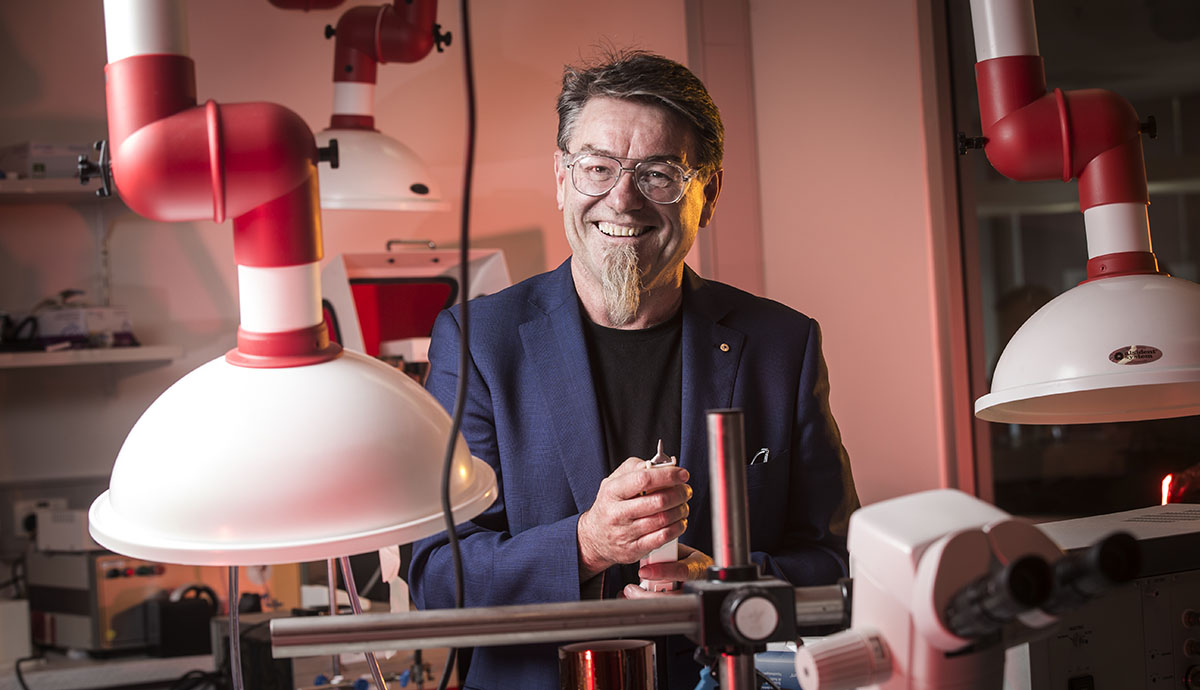A new bio-printer will help treat type 1 diabetes
The Australian University of Wollongong introduced a new 3D printer that will improve the treatment of patients suffering from type 1 diabetes.
The innovation system was called 3D-bioprinter for pancreatic islet cell transplantation (Pancreatic Islet Cell Transplantation, PICT). These cells are responsible in the human body for the production of insulin.

Prof. Gordon Wallace
After the demonstration of the latest technology to the Minister of Health of South Australia Petr Malinauskas, a bioprinter was transferred to the Royal Adelaide Hospital. The clinic became the first medical institution in the world with similar equipment.
The developed system can apply special bio-ink containing islet cells on transplanted 3D-printed frame structures . Donor islet cells enable the body to independently produce insulin to regulate blood sugar levels. However, as with any transplant, there is a risk of rejection.
“With this printer, we can mix donor cells with recipient cells and get the so-called organelles for transplantation,” explains Professor Toby Coates from the Royal Adelaide Hospital.
The resulting implant material due to the inclusion of the patient’s own cells into the donor tissue has a lower probability of rejection. In addition, since the printer allows several types of cells to be printed simultaneously, endothelial cells can be added to donor tissues to help grow new blood vessels.
Further development and improvement of the PICT printer will be carried out by the Australian Center for Advanced Electrical Materials Technology (ARC Center of Excellence for Electromaterials Sciences) under the guidance of Professor Gordon Wallace.
“With the help of the Toby Coates team from the Royal Adelaide Hospital, we will improve the efficiency of islet cell transplantation by integrating donor islet cells into a 3D printed structure. This will guarantee their protection during and after transplantation, ”commented Professor Wallace.
Type 1 diabetes mellitus is a disease of the endocrine system in which specialized pancreatic cells produce an insufficient amount of insulin. Now the only form of treatment for this disease is lifelong insulin injections. Without treatment, type 1 diabetes leads to severe complications (diabetic cardiomyopathy, renal failure, blindness, diabetic foot ulcer, etc.) and death.
The innovation system was called 3D-bioprinter for pancreatic islet cell transplantation (Pancreatic Islet Cell Transplantation, PICT). These cells are responsible in the human body for the production of insulin.

Prof. Gordon Wallace
After the demonstration of the latest technology to the Minister of Health of South Australia Petr Malinauskas, a bioprinter was transferred to the Royal Adelaide Hospital. The clinic became the first medical institution in the world with similar equipment.
The developed system can apply special bio-ink containing islet cells on transplanted 3D-printed frame structures . Donor islet cells enable the body to independently produce insulin to regulate blood sugar levels. However, as with any transplant, there is a risk of rejection.
“With this printer, we can mix donor cells with recipient cells and get the so-called organelles for transplantation,” explains Professor Toby Coates from the Royal Adelaide Hospital.
The resulting implant material due to the inclusion of the patient’s own cells into the donor tissue has a lower probability of rejection. In addition, since the printer allows several types of cells to be printed simultaneously, endothelial cells can be added to donor tissues to help grow new blood vessels.
Further development and improvement of the PICT printer will be carried out by the Australian Center for Advanced Electrical Materials Technology (ARC Center of Excellence for Electromaterials Sciences) under the guidance of Professor Gordon Wallace.
“With the help of the Toby Coates team from the Royal Adelaide Hospital, we will improve the efficiency of islet cell transplantation by integrating donor islet cells into a 3D printed structure. This will guarantee their protection during and after transplantation, ”commented Professor Wallace.
Type 1 diabetes mellitus is a disease of the endocrine system in which specialized pancreatic cells produce an insufficient amount of insulin. Now the only form of treatment for this disease is lifelong insulin injections. Without treatment, type 1 diabetes leads to severe complications (diabetic cardiomyopathy, renal failure, blindness, diabetic foot ulcer, etc.) and death.
All Articles